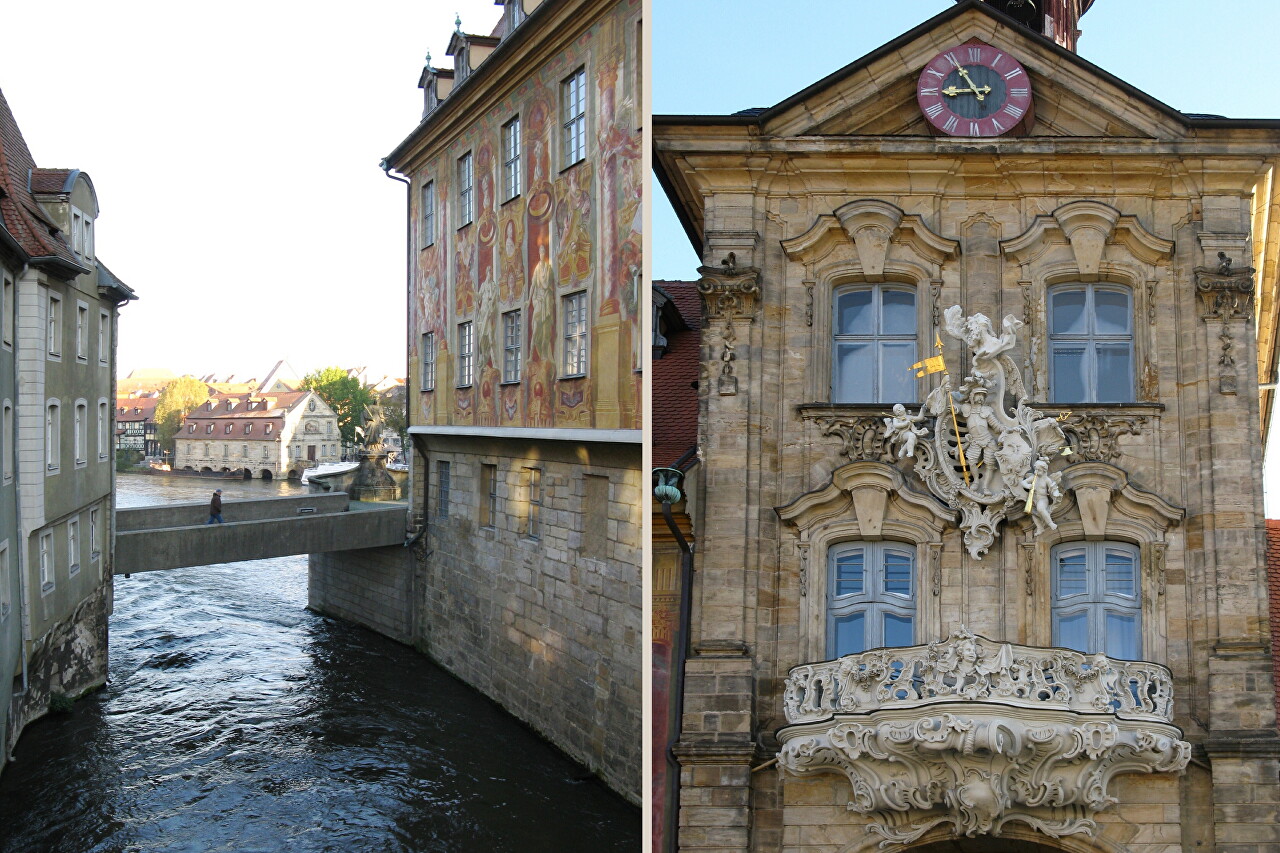Bamberg Old Town Hall, History and Architecture
The central feature of the historic part of the city is an amazing building with bright frescoed walls, surrounded on all sides by the waters of the Regnitz River, Altes Rathaus. Any local resident will tell you the legend of its construction: As you know, Bamberg was the center of a bishopric that occupied the high left bank of the river. Artisans and merchants settled on the other bank, and their community decided to create an independent self-government body, which caused sharp dissatisfaction with the church authorities. Since all the land belonged to the bishopric, the request to provide a plot for the town hall was refused, and the townspeople solved this problem in an original way - they drove piles in the middle of the river, filled the space between them with stones and soil, and built a building on this artificial island. Naturally, there is no documentary evidence for this, but there is no doubt that the Town Hall has become a symbol of the city's division into two parts and the independence of citizens from the power of the bishop.
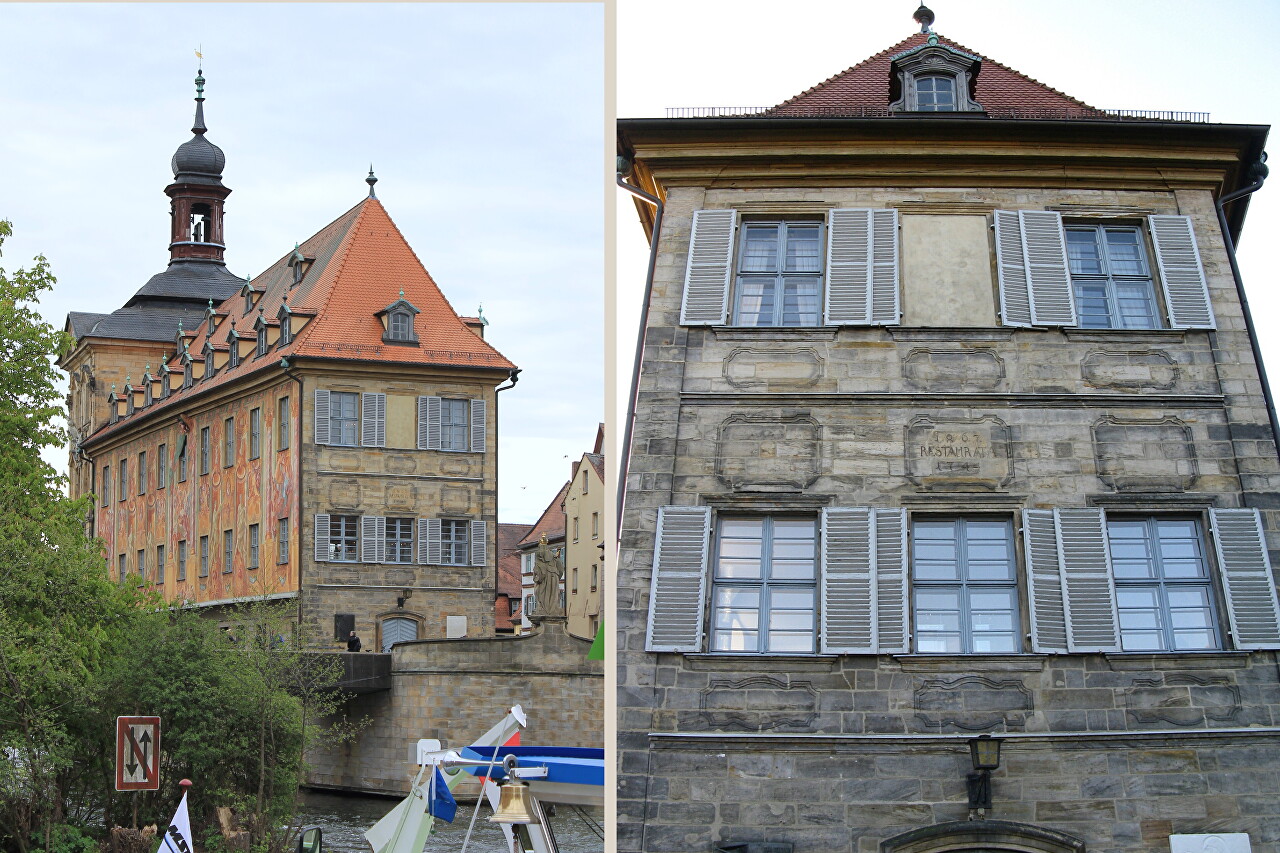
Historians have established that the island at this place existed much earlier, a bridge passed through it, the first mention of which dates back to 1268. At the bridge, the townspeople built the so-called Rottmeisterhäuschen, which is mentioned in documents in 1386. This half-timbered building, which housed the city authorities, was destroyed by fire in 1460. A year later, a stone building was erected on this site, which is exactly what we see now. The half-timbered building was also restored to its former form, housing the City Guard, the prototype of the current police. Apparently, during the same period, hundreds of oak piles were driven into the bottom of the river to strengthen the island. I must say that the riverbed in this place is a loose sandy soil, but the structure on stilts has a very high strength to this day, due to the fact that oak wood is not subject to rotting in water without oxygen and eventually becomes very hard. From 1897 to 1922, a tram line passed through the lower bridge, and a street with automobile traffic passed through the upper one, and this did not affect the buildings in any way.
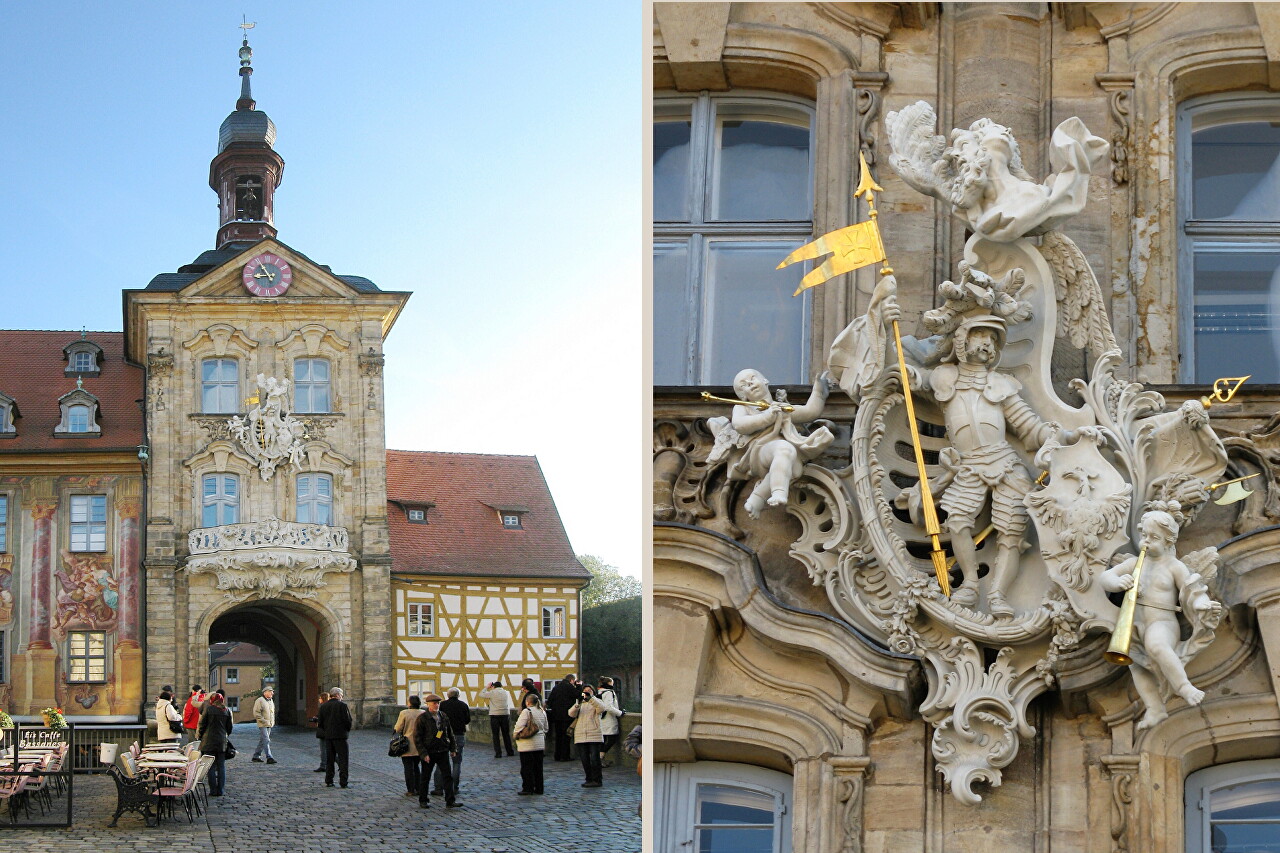
The Town Hall tower with a gate on the bridge was built between 1729 and 1746 on the instructions of Prince-Bishop Friedrich Karl von Schoenborn. The author of the project is Balthazar Neumann.
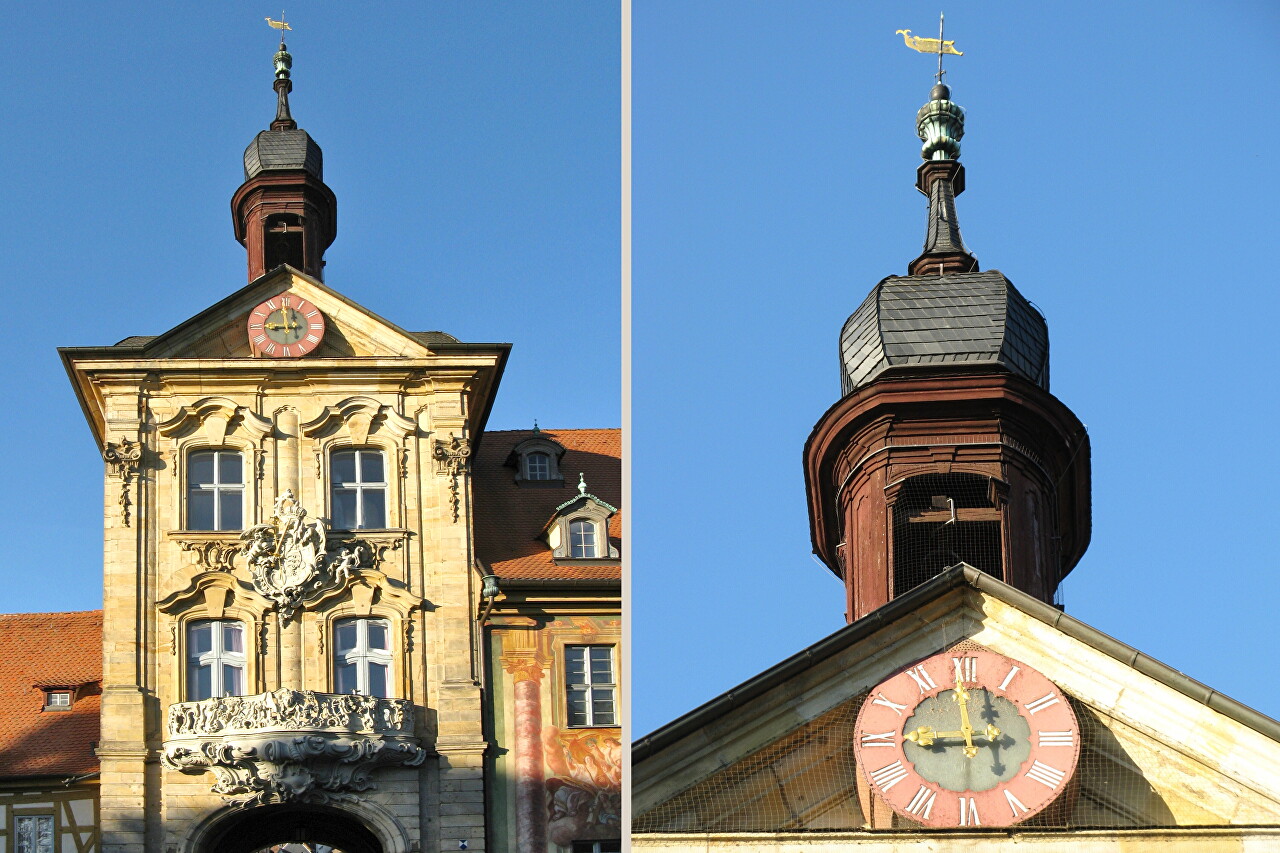
The very richly decorated Rococo balconies and coats of arms were added after 1750 by the sculptor Joseph Bonaventura Mutchele.
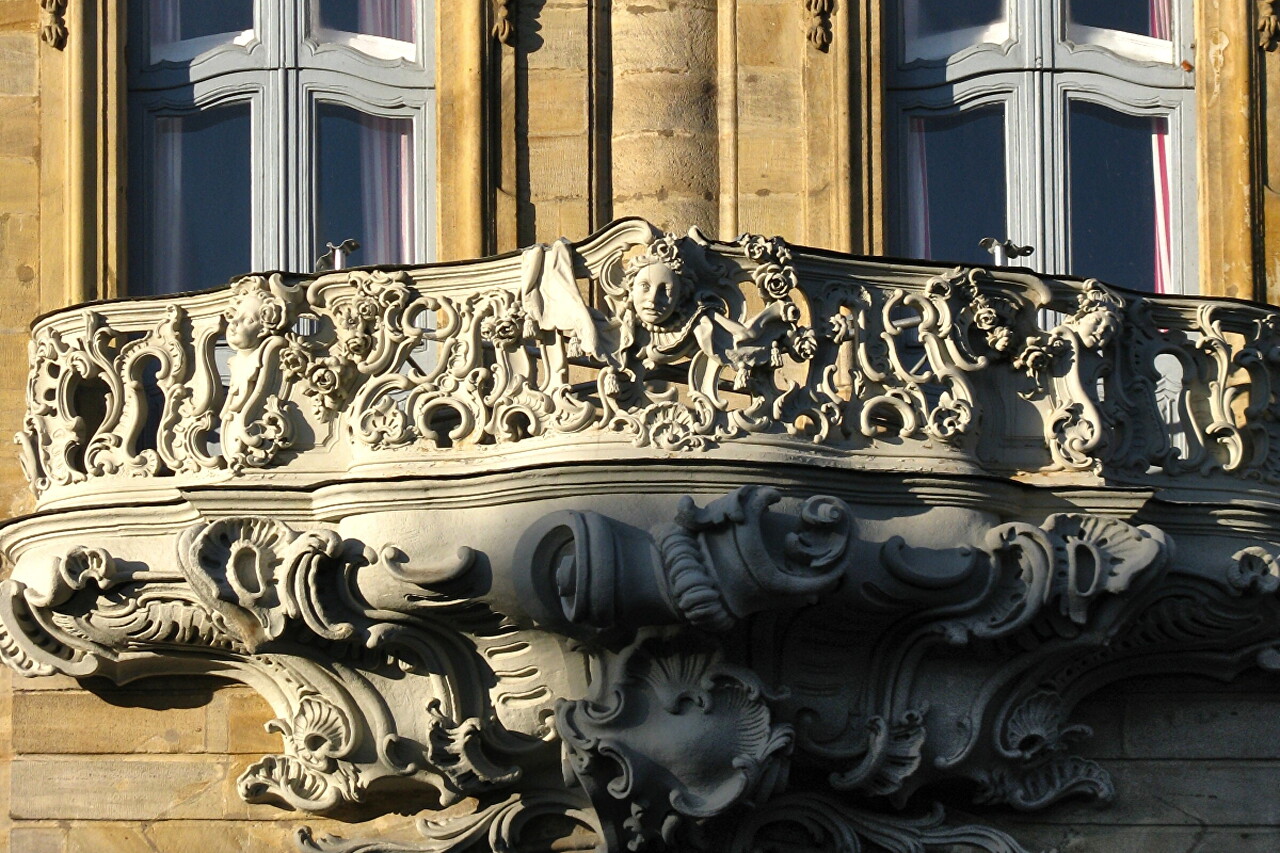
On the west side of the tower, the gate is decorated with the coat of arms of Bamberg, where St. George is depicted as a knight. On the east side is the coat of arms of Prince-Bishop Konrad von Stadion, under which the work was completed. It symbolizes the entrance to the bishopric's domain. These coats of arms once again emphasize the independence of civil power from the church.
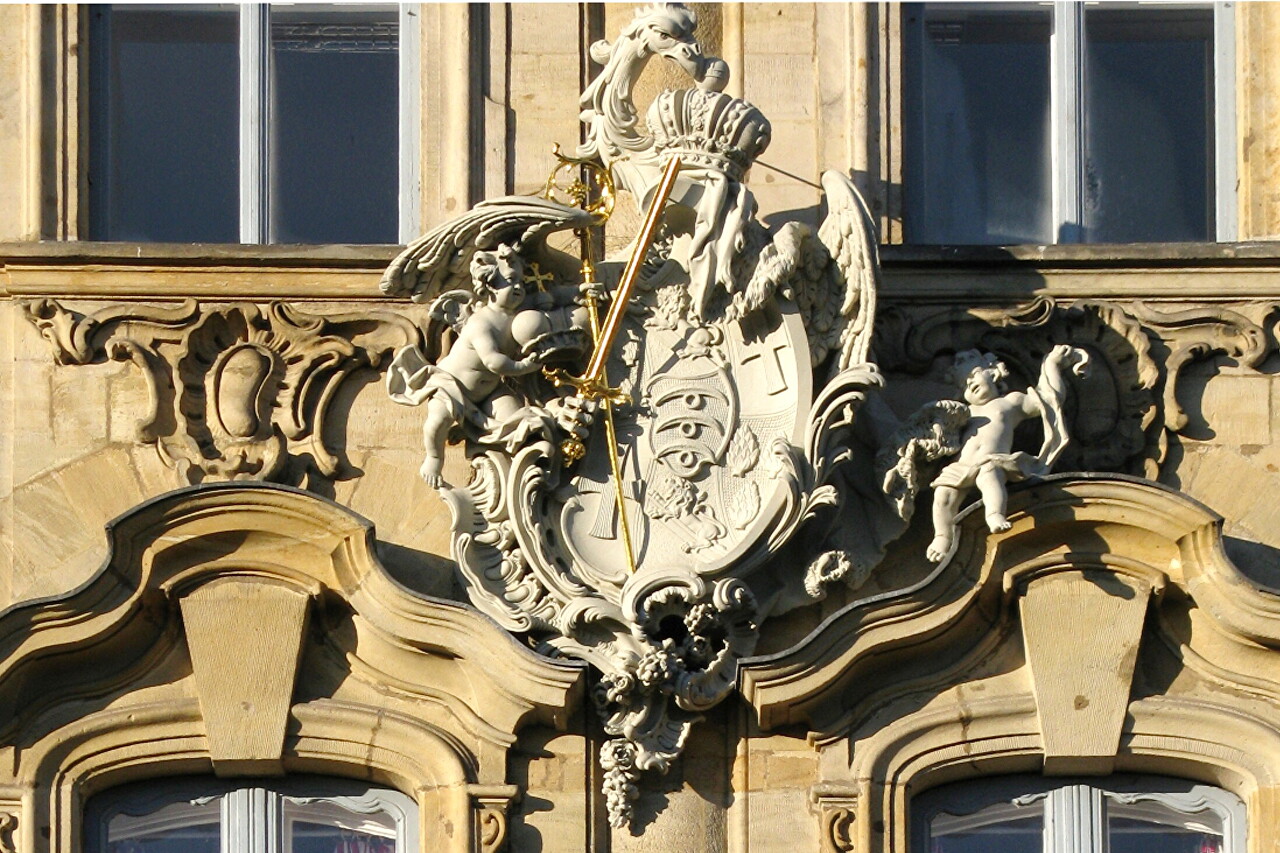
A special charm of the building is given by the frescoes in red and yellow tones that adorn the walls of the old town hall, they were executed in 1755 by the artist Johann Anwander. Here we see allegories of the four elements on the west side and allegories of the four seasons on the east side. Johann Anwander also used a spatial effect: in several places the frescoes have sculptural elements.
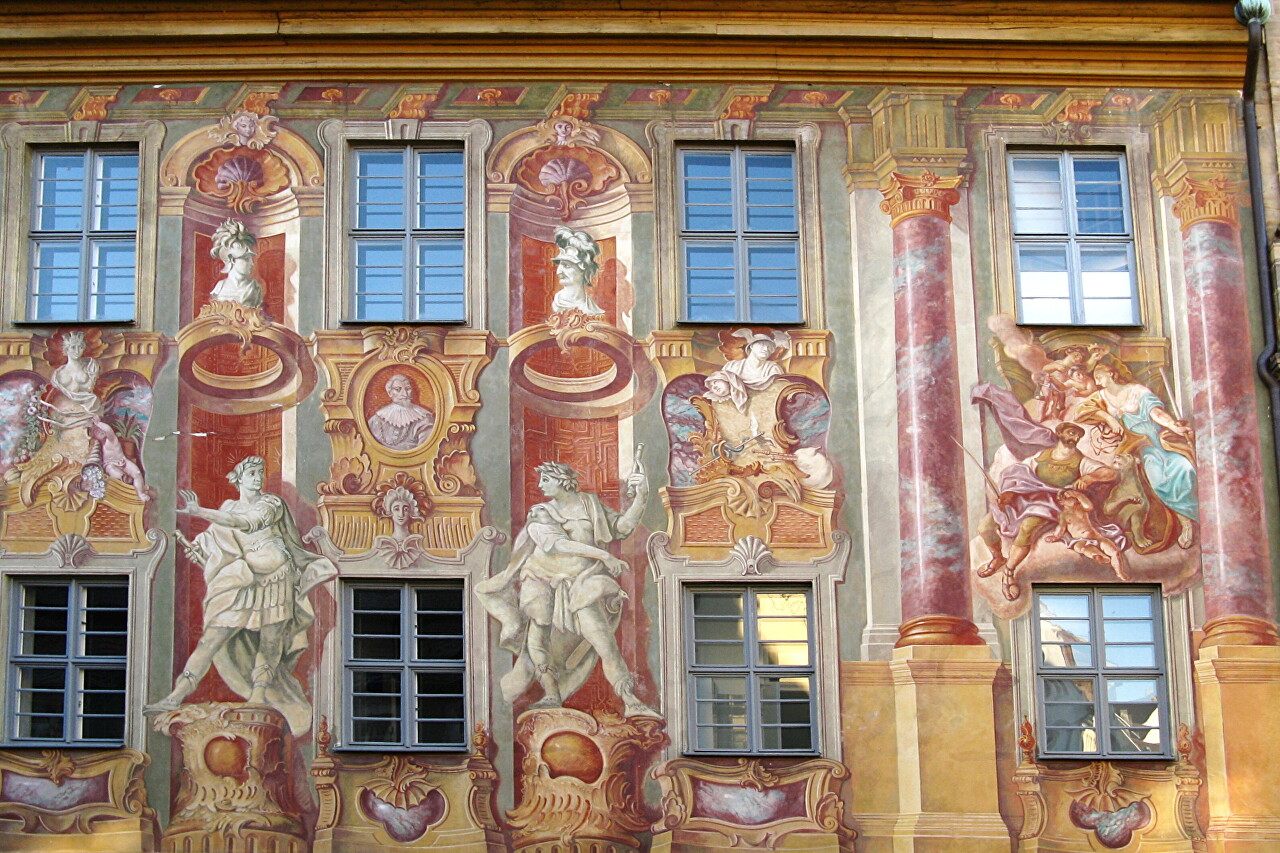
On the east wall, you will see figures of angels climbing the cornice, and if you look closely, you will find an image of an angel with one leg sticking out of the wall surface. By the middle of the twentieth century, little was known about Avander's frescoes; in 1959-1962, the artist Anton Griner recreated them in their original form.
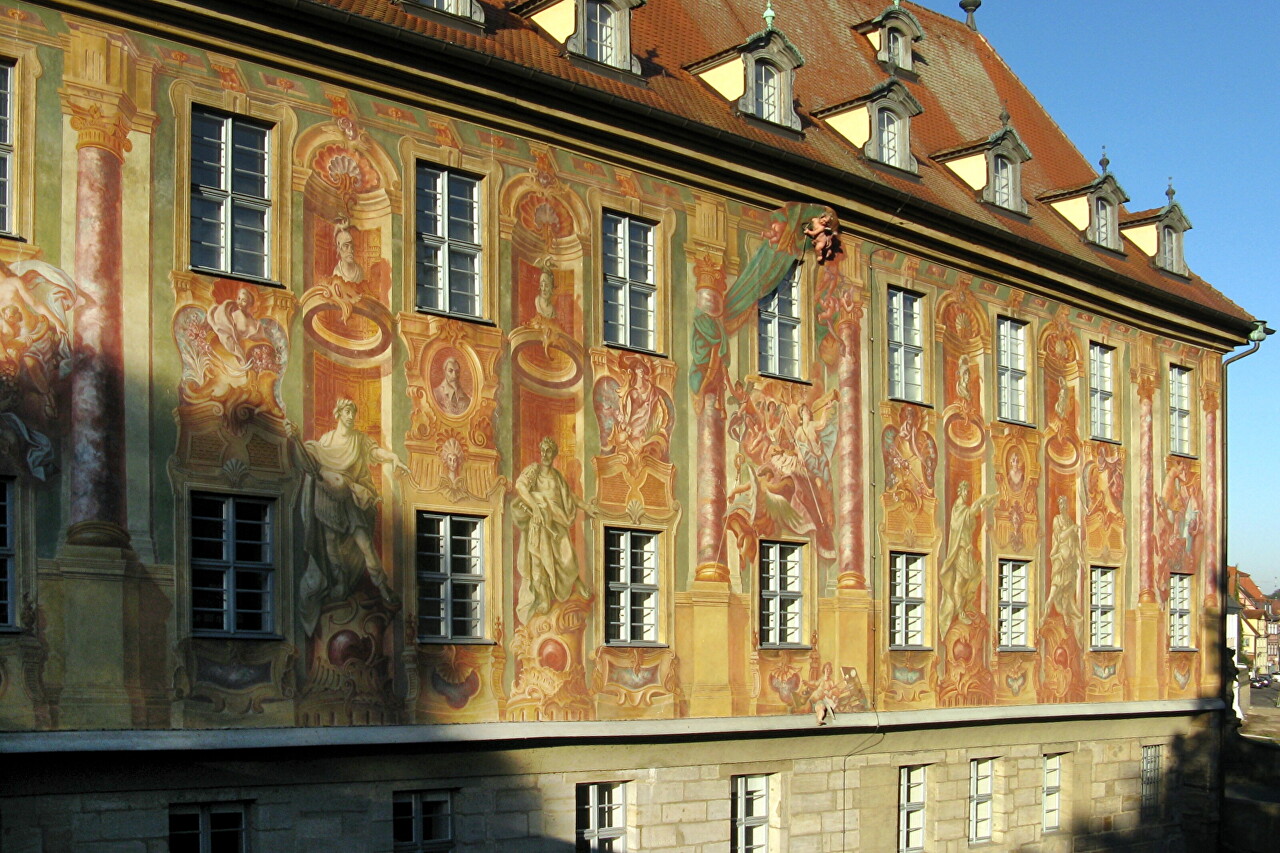
In 1995, the couple collectors Peter and Irene Ludwig gave the museums of Bamberg their collection of porcelain, which is now displayed to the public in one of the halls of the Old Town Hall. It is the largest private collection of porcelain in Europe and the largest private collection of Strasbourg faience outside of France.
